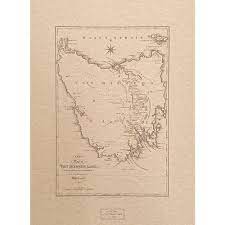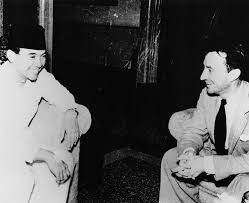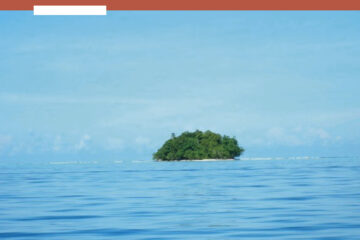Introduction
DAAAG was created to be an accessible, easy to navigate, multimedia internet service dedicated to the sustainable digital preservation of Dutch Australians’ cultural heritage – for use by scholars, researchers, bureaucrats, journalists, Dutch individuals and other digital end users worldwide.
DAAAG is an initiative of the History of Migration Experiences (HOME) Centre, Curtin University. It was established in response to the urgent recognition, worldwide, for the need to preserve both intangible and tangible cultural heritage resources in the face of the accelerated pace of cultural and economic globalization and the improbability that museums can cope with housing collections that reflect their nation’s ethnic diversity (UNESCO 2003). read more
Dutch (diasporic) Australians (abroad) At A Glance: a prototype designed for the digital preservation of the cultural heritage of Australia’s immigrants.
c2015 Nonja Peters with Paul & Jason at Sydney
UNESCO and ICOMOS note:
- The urgent need to preserve intangible and tangible cultural heritage resources in the face of the accelerated pace of cultural and economic globalization; and
- A current trend of various countries to develop emigration/immigration museums. The main aim of these facilities being the transmission of personal stories between generations and between migrants and their host populations. They reason that listening to individual stories may help construct stereotypes and foster inclusion, integration and the right to difference.
The aim of Diasporic Australians At A Glance (DAAAG) is to bring together international (homeland/hostland) partners – universities and Galleries, Libraries, Archives and Museums (GLAMS) to collaborate on an infrastructure project dedicated to the digital preservation of Australian immigrants’ ‘mutual cultural heritage’.
By ‘mutual cultural heritage’ I refer to ‘countries whose history intersects with Australia, generating material and immaterial relics of the past, which are collectively also often referred to by the term ‘common cultural heritage’. Migration is, by its very nature, a ‘mutual heritage activity’ since all migrants leave documentary traces of their past in memory institutions in their country of origin, and move records of their present and future into archives and libraries of the receiving society. By maintaining, managing, using and highlighting this heritage, we can foster a critical reflection on our past, a mutual understanding of past, present and future and promote cooperation between countries, both bilaterally and multilaterally.
The research question this project will address is “How can we best negotiate the traces and records in digital forms and enable access to the dual, interacting histories they represent?”
The project is a joint endeavor driven Dr Nonja Peters (the History of Migration Experiences at Curtin University and Professor Paul Arthur, Digital Humanities Research Group, School of Humanities & Communication Arts at UWS.
Why go digital? We are motivated by:
- By the high costs associated with traditional museum practices.The massive postwar migration shift that has stretched museums beyond their capacity to house collections that reflect their nations’ ethnic diversity.
- The increasing alignment, worldwide, of ‘memory institutions’ databases into interoperable interfaces, that is being sought by universities, communities, families and individuals in the rapidly decreasing probability that traditional museums can cope with sustaining collections that reflect the nation’s 210 ethnic groups; and
- By the rapidly increasing number of internet users. Since 1995, has risen exponentially from 16 million, representing less than 1 percent of the world population, to more than 2 billion in 2011, reflecting more than 30 percent of the world population. The resulting access to a burgeoning world of electronic and information resources, in addition to the escalating demand and growing expectations for accessing these resources and library services 24/7, has challenged academic libraries and the GLAMs around the world. It has forced them to re-think how they need to provide collections, services, resources and access to them in order to remain relevant and meet these emergent needs.
- Despite nearly a quarter of current Australians being born overseas, preserving immigrants’ cultural heritage is not a major government concern. This is a grave oversight given the ageing of especially the European groups who arrived from 1947 and the Vietnamese who came here from the mid 1970s.
Our ultimate aim is a ‘best practice’ dynamic, easily navigable, multimedia easily accessible single digital eMigration collection for Australia’s immigrant groups. The ensuing resource to be dedicated to providing interoperable electronic access to relevant and complementary (immigration/emigration) host and homeland archival, photographic and ephemeral databases. Plus any other documentary evidence (birth, death lists, shipping lists, passport requests, health clearances, Alien registration, citizenship papers, school or business records, diaries and letters previously held only in state, regional, national and international archives, consulates and other governmental organizations in Australia and internationally for research.
As well as obviating the tyranny of distance and serving the duty to remember, the focus of this initiative is to acknowledge, integrate and build awareness of the migration experience. Including the contributions made by migrants to their host societies; the diversity and wealth of the origin cultures; the right to a dual-belonging; to find common ground and contribute to the national identity; build awareness and educate the public on the events that induced individuals – and refugees in particular – to leave their land, thus developing empathy among the host population and foster a sense of belonging of communities to feel an integral part of the host nation.
Pilot Study
We currently have a pilot project underway with the Huygens ING Institute for Dutch History in The Hague to digitize emigration records held in the Nationaal Archief, The Hague and match them up with immigration records held in the National Archives, Canberra; and match them up, where relevant, with names on the Welcome Walls at the Fremantle Maritime Museum and Australian National Maritime Museum in Sydney, and with documentation held by Dutch social, religious and community clubs.
In the context of this pilot, to DAAAG’s dedication to excellence in terms of design and content, we seek to add innovation in collecting, preserving, interlinking and providing access to rich historical material in the Netherlands, Australia and Indonesia. By way of example, I refer to the digital American Family Immigration History Center (AFIHC) at Ellis Island New York. It currently receives approximately NINE million hits per day, mostly from researchers and individuals looking for family history information.
A great strength of the project is to break ground in developing new methods for gathering and publishing these materials in digital forms that are accessible, engaging and which generate cross-currents of cultural understanding and acknowledgement via multiple technical pathways. These pathways would be expected to range from interactive multi-vocal digital storytelling platforms to mixed reality modes of historical understanding, exploiting both current and emerging technologies. The project’s major work is therefore contingent on developing best practice for the presentation of these materials in new digital forms, setting benchmarks and standards for their treatment.
A common digital interpretive research environment will facilitate closer cultural and social analysis for comparative research and to educate. This will widen the scope and range of the interpretative opportunities; foster international academic relationships and networks involving Partner Organisation – universities, libraries, museums, archives and genealogical institutions – and open up new avenues for a plethora of bilateral research collaborations.
The following are links to two PowerPoint Presentations from DAAAG
DAAAG Dutch Conference Melbourne 2013


